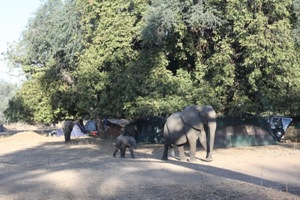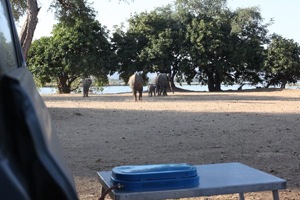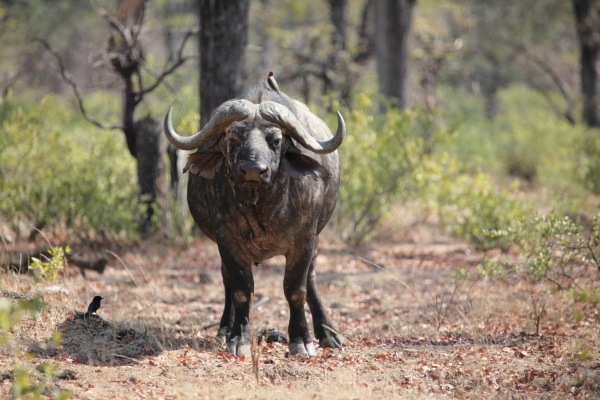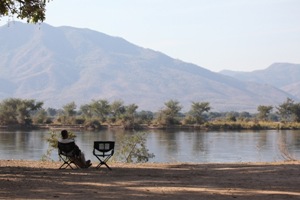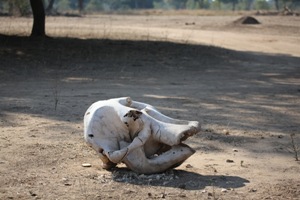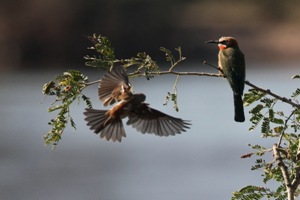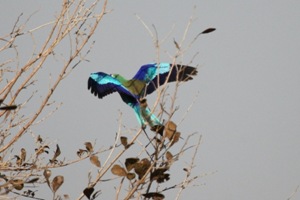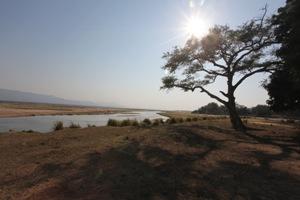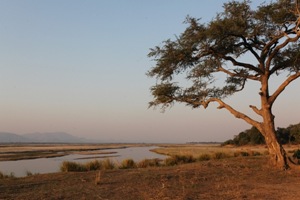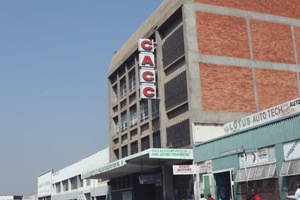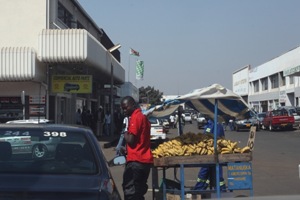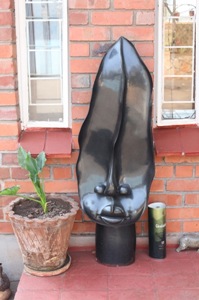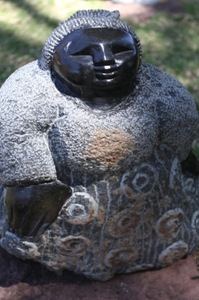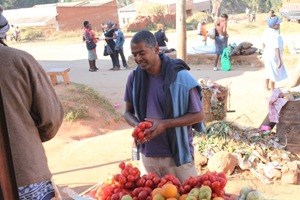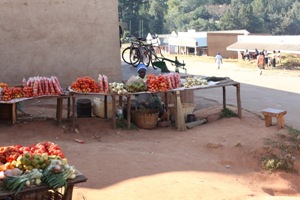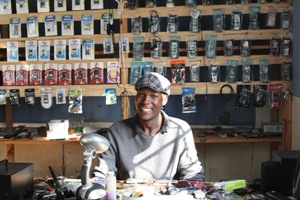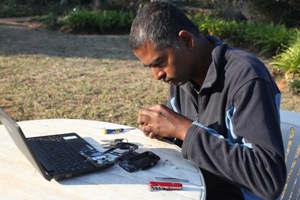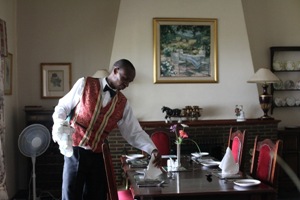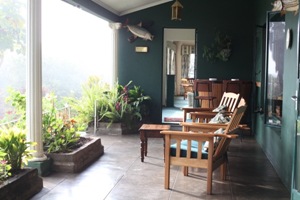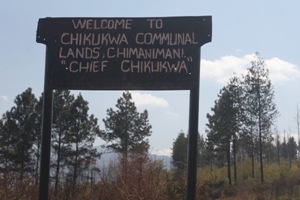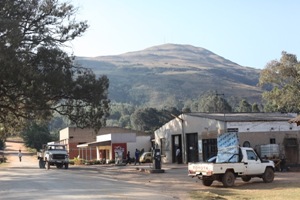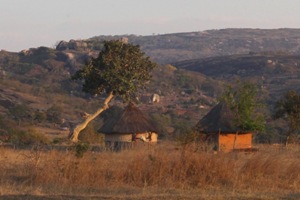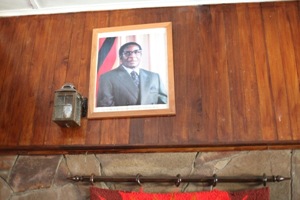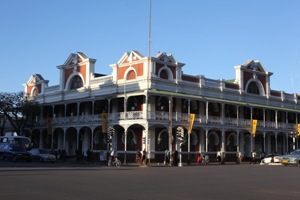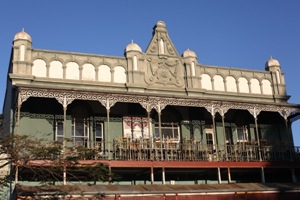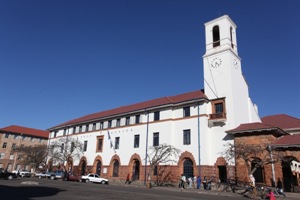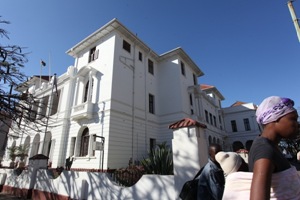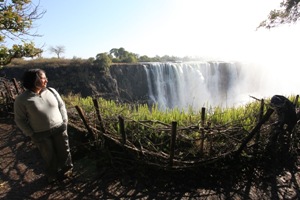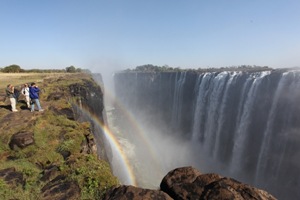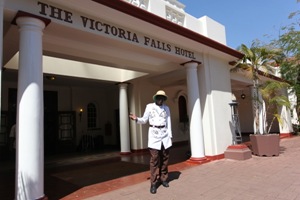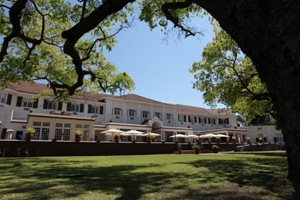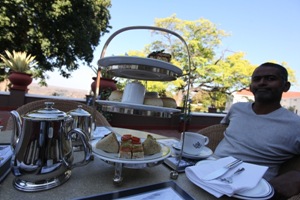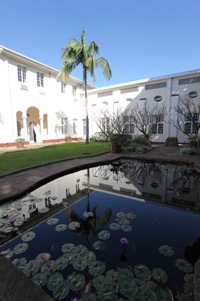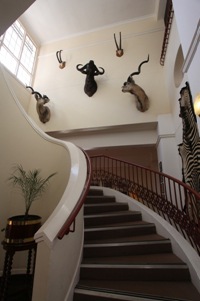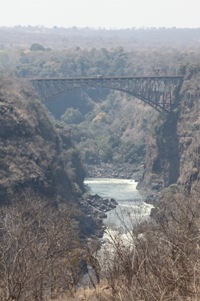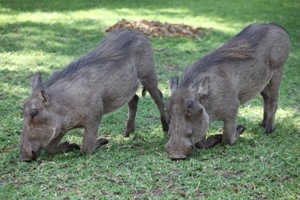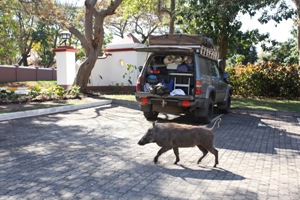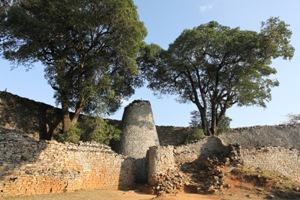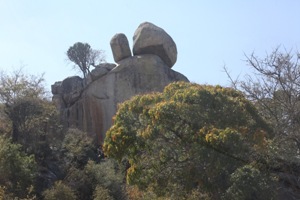Yesterday was a good day. We managed to cook supper at the campsite in Mana Pools without any elephant, hyena, buffalo, hippo, warthog, baboon, impala or puff adders interrupting the preparation. The previous night we had wondered if it was worth leaving camp for a game drive the next day when all the animals seemed to be coming to us!
Mana Pools National Park is not for the faint hearted as the campsites are basic and not at all fenced off. As a result, the game happily wanders around your camping spot any time it pleases. Quite an experience for two urbanites!
Mana Pools is also a favourite holiday spot for South Africans travelling as a family or group of friends. Their camp set up is quite a sight to behold. At least three 4x4s with trailers arrive and form a circle. Within seconds, roof tents, trailer top tents and huge walk-in ground tents are being erected. Come back half an hour later and a tent city has risen up from the African earth complete with tables, chairs, cooking area, washing up stand and shower cubicle. To complete that home from home look, a few lines of clothes are hung up to be dried. Surely these sorts of construction skills could be put to good use in areas hit by natural disasters such as floods, hurricanes and earthquakes?
I had visited Zimbabwe about 15 years ago and remember it as the friendliest country I had been to and incredibly beautiful. The troubles of recent years had been heartbreaking to see. Even now, we had heard mixed reports from other overlanders, including reports that foreign vehicles were being targeted in Harare with tyres being slashed, that supermarket shelves were empty, and that policemen were making up random offences in order to extract ‘fines’. The reality, at least for us, was thankfully far from these stories.
We hadn’t intended to visit Harare, but a need for a few nuts and bolts took us into the capital, and in particular to the bustling ‘car parts’ street. In the 50 or so car parts shops, there are in fact no new or original parts being sold. Instead, everything appears to have been taken from scrapped vehicles (and boy do you see a lots of vehicles shells on the sides of roads – now we know where the parts end up!) Still, everyone was incredibly friendly and tried to help.
There were also parts of Harare that were as modern as any capital we had been to – lovely cafes and bakeries, plenty of fruit and veg being sold in supermarkets and on the streets, well stocked shelves, communication that works most of the time, and lots of new cars. Our obligatory Curry in the Capital was in a modern restaurant overlooking the cricket ground where the Indians still play, and at lunch we overheard stories of great innings and feats of cricketing genius, which certainly put a smile on Ven’s face! Even the backpackers we camped at was pretty full and the streets were lined with plenty of arts, crafts and tourist tat.
Harare was also where we caught our first glimpse of Zim’s colonial past, with beautiful houses behind high brick walls and maids in blue uniforms and white aprons standing on immaculately manicured front lawns. As Ven commented, “things must be getting better when the broken glass used on the tops of walls for security is made from fancy wine bottles.”
Not just in Harare, but also in Bulawayo, Zimbabwe’s second city, and some smaller places we passed through, people generally seemed to be working, or at least were busy. There were far fewer loiterers than we had imagined in the cities, and driving through the villages, there were lots of small stalls selling vegetables and people happily waving at us without wanting anything. Even the customs and immigration officers at the border were some of the happiest we had seen and there was cheerful, jangly Zimbabwean music playing in the background.
Sadly though, many people are in jobs they are overqualified for. We came across very knowledgeable and well spoken fuel attendants, waiters, and even a mechanic who had a Masters in electrical engineering. Of course when you scratch beneath the surface, read the newspapers and talk to people, there is much that needs to be done, but at least it feels like a country slowly on the rise, no doubt thanks in part to the hard working and positive nature of its people.
We saw more of Zim’s beautiful colonial architecture in Bulawayo and in the Eastern Highlands, an area of rolling hills, botanical gardens and tea houses. The walls of many places were were steeped in history and covered in old photos, china plates or antlers! And whether we were sipping G&Ts on the veranda of a guest house or indulging in afternoon tea at the Victoria Falls Hotel, the waiter service everywhere was impeccable.
Moving back in time from its colonial history, we went to see the ancient Shona ruins at Great Zimbabwe, which gave the country its name. Construction of the complex dates back to the 11thcentury and it was built as a royal palace. The high stone walls were built without mortar, and the corridors became narrower the further in you went as a means of self defence. For years after they were discovered, colonial governments denied that these structures were created by Africans, and tried to attribute them to various more ‘developed’ civilisations, including the Egyptians and the Phoenicians, or even that it was the capital of the Queen of Sheba! Our guide mentioned that the Great Enclosure here was the third largest made-made stone structure after the Pyramids and the Great Wall…. The setting is beautiful, with views from the top of the structures across a rocky landscape dotted with precariously balanced boulders.
At the risk of sounding like a tourist brochure, Zimbabwe really is a fabulous place to visit, and now more than ever, with people desperate to work yet extremely friendly and welcoming. Even the roads were some of the best we’ve driven on in Africa. We’ve only scratched the surface of what there is to see and can’t wait to go back again!

